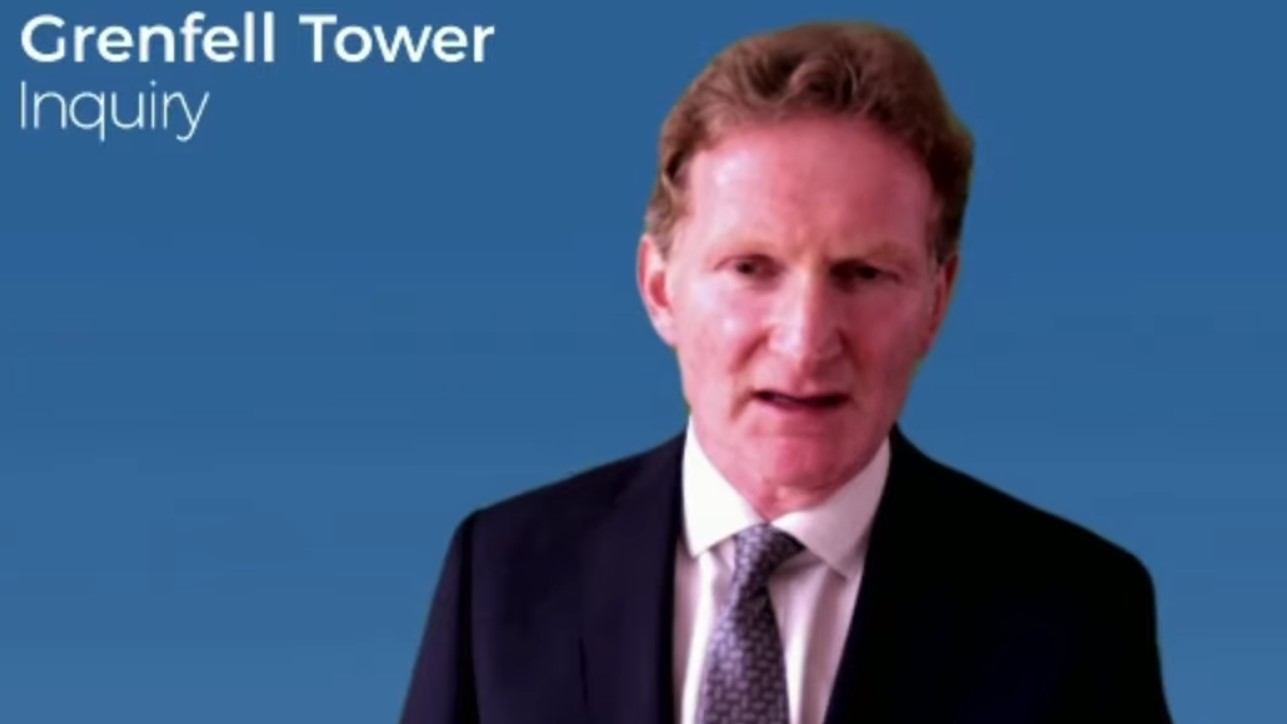
A 2008 certificate issued by the British Board of Agrément (BBA) for Kingspan K15 insulation was based on data “extrapolated” from fire test reports on similar Kingspan phenolic products, some of which were 15 years old, in a “basic failure of due diligence” the Grenfell Tower Inquiry has heard.
The news emerged during evidence from Brian Moore, who was operations director at the BBA from October 2014 until June 2018 and then deputy chief executive until he left in January 2020.
Moore, who is a former police officer and investigator, oversaw staff productivity and quality in his role as operations director. He was not qualified to assess products and was not required to have any knowledge of construction materials for his role.
In a witness statement given prior to the Inquiry, Moore gave evidence that the classification for K15 was “extrapolated” by the BBA from previous tests. Moore was questioned about the 2008 classification that certified K15 as Class 0 for fire spread, despite the fact that it was produced before his time at the BBA, because he had been tasked with locating, collating and providing BBA material to the Inquiry.
Moore said he could not say what the process or methodology that was used for the extrapolation was, but that while it wasn’t common, his understanding was that it was “not unusual” if products were “of a similar kind to each other”.
Asked if the BBA followed any particular guidance when carrying out these extrapolations, Moore said: “Not that I’m aware of. It would be the technical opinion of the competent individual, supported by their peers. A lot of the BBA work is a technical opinion, which we need to stand by in evidence, but I’m not aware that there’s specific guidance in this case that was applied in terms of making the decision about extrapolation, if indeed that was the case.”
Lead counsel to the Inquiry Richard Millett QC asked Moore: “To your knowledge, has this concept or methodology of extrapolating from test data from one product to another product to arrive at an assertion that that other product is class 0 ever been discussed or checked by you with a fire engineer?”
Moore replied: “It has not been checked by me with a fire engineer.”
Moore was also asked what consideration was given by the BBA to the fact that none of the products whose tests formed the basis of the K15 certificate had the same foil facer on the phenolic core as K15 did.
Moore said: “If they were in the folder, in the section that related to fire, then it was the assumption, the belief, that they had been considered. Now, whether they were satisfactory evidence to make the opinion that would support BS 476 in the absence of a test, I can’t comment. If they’re not sufficiently similar, then that can’t be a good thing.”
He agreed that the BBA should have requested fire test data to BS 476-6 and -7 instead of extrapolating the data from different products and previous certificates.
Millett asked: “Do you accept that proceeding to state class 0 in the absence of any test data was a very basic failure of due diligence on the part of the BBA?”
Moore replied: “If there was no basis upon which to include that statement in the certificate, then that can’t be correct, that can’t be right.”
Millett asked: “Are you able to account for why it was that the BBA allowed technical statements to be printed in a certificate which would be relied upon by a wide range of construction professionals without doing even the most basic checks to make sure that the assertions were properly founded in evidential data?”
Moore replied: “I can’t explain that.” He also agreed that no initial inspection of the manufacture of K15 was carried out.
Millett asked: “Was it common practice at that time at the BBA when a new product was to be certified, such as K15, that no assessment was carried out at all on the basis that the level of quality control operated by the putative certificate holder was considered to be satisfactory?
Moore said: “It’s difficult − a good number of years before I joined the BBA. It certainly wasn’t acceptable at the time when I was there. It’s difficult to explain.”
The Inquiry continues.










